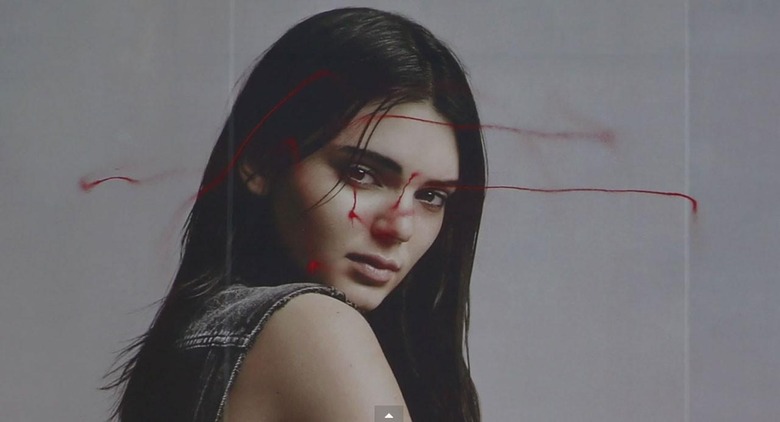World's first drone graffiti... isn't that great
So you want to get a drone and make it spray a fantastic mural on your local public wall, yes? That's what KATSU did this week, right on Kendall Jenner's face. It was about this time last year that this same graffiti artist demonstrated his newfound love of drones for their ability to deploy spray paint whilst flying. Apparently it took him a whole year to actually find the place at which fate and a lack of local authority readiness were aligned.
KATSU is the sort of graffiti artist to do a spray painting in a hard-to-reach spot with far more emphasis placed on accomplishing the feat than on the aesthetic outcome. Below you'll see a video of the KATSU Drone Drawing on Kendall Jenner, as they call it.
The image you see above was captured by Drone Center writer Arthur Holland for Wired.
This is not the first drone-based spray painting in the world. Nor is it the first graffiti this high, or on this massive a billboard. It is, however,
Below you'll see the nightmare-fuel vision of drones spraying canvases from back in April of 2014. This was at the 2014 Silicon Valley Contemporary. This was captured in an interview with Motherboard on VICE with KATSU back then as well.
As you can see, it's less about creating something extremely visually stimulating in the end, and more about the process.
The same can be said about this week's product.

For those of you not particularly understanding of graffiti, wishing that creative people like KATSU would spend their time doing something more traditional, there's also what follows.
This video shows KATSU painting his name in tag form on the barrier fence of the White House.
He's also not a big fan of graffiti-based art shows, as you'll see here.
Below you'll see some more art by a drone, as controlled by artist Wagenknecht back in December of 2014. She began doing this type of painting in 2007, a "mechanically assisted series of action paintings" that continues today.
Look like the way of the future to you?
Or is this just another process in a long line of processes that lead to images that belong in art museums – or on the street?
